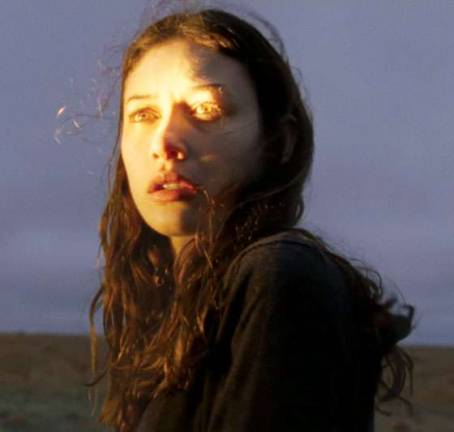Road To the Wonder

Terrence Malick's Christian cinema quest
The affecting if imperfect Les Miserable was cruelly mocked because its essentially Christian story of forgiveness and redemption was out of sync with modern movie nihilism. It takes a cult figure like Terrence Malick to challenge this intolerance in his boldly Christian new film To the Wonder.
Critics who prefer to confuse its mystical qualities for indefinite transcendentalism will work hard to bend Malick's spirituality into something modish.
For this reason To The Wonder may be Malick's best and least understood film since The New World. Yet To the Wonder has a real structural problem: Malick's faulty storytelling sense. Yet, given Malick's exalted visual style. Malick has made soul-searching both his theme and his life's work, which explains why To the Wonder defies conventional narrative logic for a cinematic equivalent to the epistle. He addresses the source of all life as he instructs a faithless, ambiguous public audience through his characters, a French single mother Marina (Olga Kurylenko) who marries an American man Neil (Ben Affleck) and moves to his Midwestern home where he is tempted by an old flame Jane (Rachel MacAdams) and she succumbs to a dalliance with a local worker (Charles Baker).
Throughout this familiar David-and-Bathsheba conflict, Malick muses on Marina and Neil's spiritual courtship. His style is deliberately ruminative, elliptical-circling around his characters, across the environment and through their perplexity. It's almost a silent movie approach except for high philosophizing in voice-over vernacular. To the Wonder is certainly a love story, though not a romance in the Hollywood sense but a higher love story where the various beseeching voices refer to "You" meaning either God or an intimate. ("Everywhere you're within me, around me and still I can't see you." "How long will you hide yourself from me?")
Malick dares address what used to be a common understanding among filmgoers until politically correct challenges to religious liberty allowed agnosticism, atheism and secularism to dominate contemporary film culture. Ironically, this gives Malick's idiosyncratic movies an old-fashioned tone that fits his brand of Americana-semi-autobiographical Southern accents, Southwestern locales and mid-20th century decor. To the Wonder's European opening scenes at the Abbey de Mont St. Michel creates the sense of a spiritual travelogue.
A third major character is an immigrant priest Father Quintana (Javier Bardem) who questions his faith more than the amorous couple. Oddly, Bardem's characterization seems as blank as Affleck's even though he is the key to Malick's religious declaration. Quintana pronounces "God gave us marriage as a holy mystery; man and woman as one" which is so out of step with political fashion it must surely represent Malick's own questioning, even as this film is the closest Malick has come to outright professing religious belief. Some may prefer pondering if To the Wonder's depiction of temptation and sin are more than religious concepts yet certain details (a doctor visit and x-ray of an IUD-shocking anti-nature imagery) make it doubtful if Malick is strictly being philosophical. He may be a last holdout of a spiritual artistic heritage.
When Malick is at his best-bestowing holiness upon a married couple's love or tragedy upon their infidelity-he is not at all spiritually ambiguous but it took some time for him to get there. Criterion's new release of Malick's debut feature Badlands, along with the DVD availability of his catalog, make it possible to track the traditions he follows:
Malick's singular personal expression is respectable yet confounded by his own creativity and intransigence. To the Wonder trades The Tree of Life's problems for a half-resolution: defining existence through dissatisfaction and troubled faith. That Malick's spiritual allegories work at a higher level than most other filmmakers doesn't make him superior, especially when his experimentation doesn't supersede established methods of successful expression. Even at two hours, To the Wonder feels as undisciplined as The Tree of Life; both could be much shorter or, God forbid, even longer still.
Malick overindulges his own "poetry" although he probably wouldn't be an artist if he didn't. But look at the limits of his speculative style. Working again with cinematographer Emmanuel Lubezski, Malick's fallen back on a pristine visual quality that is limpid yet samey. Extraordinary moments such as Marina guiltily leaving her liaison with the weight of the universe overhead recalls William Blake's "And did the countenance divine look down upon these cloudy hills." That poetic question describes Malick's visual curiosity-Dreyer, Flaherty, Dovzhenko and Lean are his antecedents. Yet he now favors a clean, well-scrubbed, texture-less light. To the Wonder ends with a visual coup when light hits Kurylenko but Malick's "vision" is becoming increasingly unrevealing.
When Ingrid Bergman climbed over rocks, through fumes and steam to the top of a volcano at the end of Roberto Rossellini's Stromboli, her appreciation for awesome nature, through realization of life's arduous struggle, was both sensual and ecstatic-the closest cinema has come to the exhortations in Black American gospel. Malick is after similar effects. To the Wonder uses more sensuous, less audacious methods when recognition of nature causes beautiful Kurylenko to realize her fall and possible redemption after committing adultery.
Malick questions today's immoral commonplaces (same as Badlands) and his questioning ("Shine though us. Flood our souls with your spirit light so completely that our lives are a reflection of yours") is powerful in ways reminiscent of The Thin Red Line and The New World yet the film follows a path already blazed by Rossellini-including his devastating marital drama Voyage to Italy. It's an achievement to evoke masterpieces but gifted, committed, high-minded Malick should go about his Father's business and make them.
Follow Armond White on Twitter at 3xchair